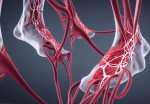During the SOLACI-SBHCI 2023 Congress, a special session was held to honor the great figures of interventional cardiology in Brazil and Latin America, whose leadership led to the greatness of the Latin American Society of Interventional Cardiology and the Brazilian Society of Hemodynamics and Interventional Cardiology. At the beginning of the session, Dr. Ricardo Costa...
SOLACI Research Registries were presented at the SOLACI-SBHCI 2023 Congress
The area of records within SOLACI – SOLACI Research – continues to grow and share the results of its investigations with the entire Latin American interventional community. In this case, a dedicated session was held during the SOLACI-SBHCI 2023 Congress to present the data from the SOLACI records and to discuss the challenges of carrying...
EuroCTO: Safety and Benefit at 3 Years
Chronic total occlusions (CTOs) account for approximately 15-20% of patients with stable coronary artery disease. This field has seen various advances regarding treatment, leading to an improvement in the success rate of procedures. According to registries and randomized studies, the main indication for percutaneous coronary intervention (PCI) of CTO should be based more on clinical...
Aortic Stenosis and Cardiogenic Shock: Is TAVR an Option?
Cardiogenic shock (CS) in a setting of aortic stenosis is associated with high mortality rates. In consequence, surgery is generally not a possibility for this patient group, and they usually undergo aortic valvuloplasty, resulting in a mortality rate of 33%-50% at 30 days, 70% at one year, and 90% at two years. While transcatheter aortic...
A New Alternative for the Treatment of Heart Failure: Left Atrial to Coronary Sinus Shunt with the APTURE Device
ALT FLOW device for left atrial to coronary sinus shunting in symptomatic heart failure patients. In the treatment of heart failure (HF), significant improvement in patient quality of life and prognosis has been achieved through appropriate medical treatment and, in some cases, the use of devices. However, in certain cases, satisfactory clinical improvement cannot be...
BASIL-2: Revascularization of Infra-Popliteal Territory in Patients with Critical Lower Limb Ischemia
Results of infrapopliteal territory revascularization in critical limb ischemia. Compared against the general population, patients suffering from critical lower limb ischemia (CLI) not only experience seriously limited quality of life, but also face a significant higher risk of death and amputation. Specifically, the optimal treatment for these patients remains uncertain. This uncertainty was sparked by...
Latest Developments in Tricuspid Regurgitation
The natural history of tricuspid regurgitation is associated to hospitalization for cardiac failure and mortality. This is why the AHA/ACC guidelines recommend surgery when the tricuspid fails during left valve surgical repair, because its slow progression is associated with high mortality (35%). Many of these patients are high risk and percutaneous intervention has surged as...
Post PCI Angina: Inevitable or Avoidable?
Predictors of post PCI angina Among the complications of ischemic cardiomyopathy stenting, those called chronic, with significant functional and mental compromise, might affect patient quality of life. This can be observed in different scenarios, such as instent restenosis and post PCI angina. This kind of complications is associated with anxiety and depression at long term. ...
CLOUT Registry: Thrombectomy in TVP with ClotTriever
Safety and efficacy of the ClotTriever device in extended deep vein thrombosis. The endovascular treatment of thromboembolic disease has evolved and new devices have come out in the last few years to reduce morbimortality from its complications. Sub-treating this pathology has long term implications, such as reduced quality of life, limiting functional class and, worst...
Deep Vein Arterialization: Have We Conquered “Non-Revascularizable” Critical Limb Ischemia?
Deep vein Arterialization in patients with critical “non-revascularizable” limb ischemia. We are familiar with the poor quality of life and elevated mortality of patients with chronic limb-threatening ischemia (CLTI). In its last stages (nearly terminal), revascularization (either surgical or endovascular) has been shown to reduce amputation incidence. However, similarly to heart disease and other vascular scenarios,...









